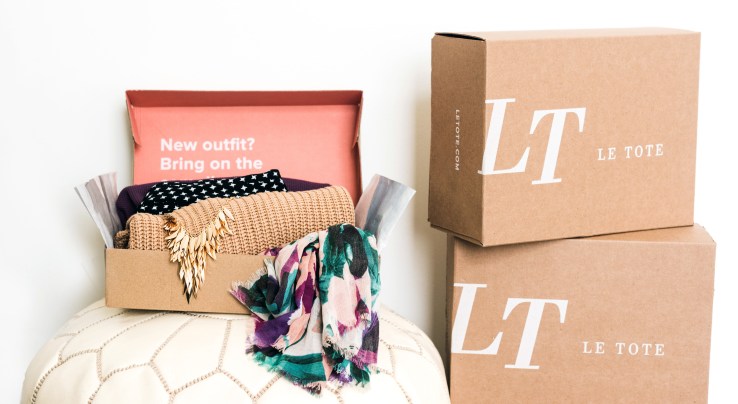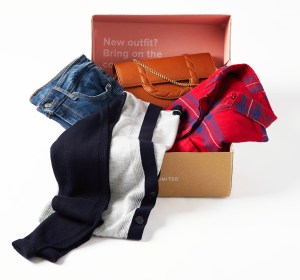Fashion subscription service Le Tote ventures into China’s competitive luxury retail market
![]()

China has already been one of the fastest-growing luxury retail markets in the world for years. As their spending power increases, consumers are becoming pickier, demanding premium brands at better prices, with better service. Now Le Tote, the fashion rental service backed by Andreessen Horowitz, GV and other investors, is preparing to enter the fray.
The San Francisco-based company says this makes it the first U.S. subscription service to enter China. Le Tote China will run a beta program on WeChat, the ubiquitous messaging and e-commerce platform, before launching to the public in spring.
Almost all foreign tech companies eyeing Chinese expansion need a local partner to help them navigate cultural differences and regulations, which vary from province to province, and Le Tote found one in the fashion industry. Clement Tang, formerly executive director and president of Belle International, the largest shoe retailer in China, will serve as Le Tote China’s first CEO.
The launch of more luxury rental services was one of the reasons Le Tote decided to it was the right time to enter China, says founder and CEO Rakesh Tondon, along with the dramatic growth of its sharing economy and online and logistics infrastructure. Like Stitch Fix and other fashion box services, each month Le Tote members get a package of clothing and accessories customized to their preferences. Instead of buying what they want to keep, however, users of Le Tote (which has been called the “Netflix of fashion”) can wear pieces for as long as they like before returning them. Items are then inspected and cleaned before being sent to other customers. Le Tote China is still finalizing its list of partners, but in United States it currently work with about 200 brands.
There are already many services in China that let users borrow designer bags, shoes or special occasion dresses, but renting everyday clothing is still a relatively new concept. But Le Tote already has competition: Y-Closet, a startup with a similar business model backed by Alibaba Innovation Ventures, Softbank China and Sequoia China.
 Both Le Tote and Y-Closet focus on making premium brands accessible to women in their twenties to forties who want a variety of work outfits, as opposed to special occasion clothing or fancy handbags. As in the U.S., Le Tote is counting on its proprietary technology, which lets it customize boxes, track user preferences and handle logistics at scale, to give it a competitive advantage in China.
Both Le Tote and Y-Closet focus on making premium brands accessible to women in their twenties to forties who want a variety of work outfits, as opposed to special occasion clothing or fancy handbags. As in the U.S., Le Tote is counting on its proprietary technology, which lets it customize boxes, track user preferences and handle logistics at scale, to give it a competitive advantage in China.
The company spent about four or five years refining its software to get to the point where it could be used by any vendor, in any market, Tondon says, and worked with its team in Shenzhen, where Le Tote China is headquartered, to localize its platform. The company’s first distribution center will be located in Dongguan in Guangdong Province, with plans to open warehouses in Shanghai and Beijing, too.
“Everything that we use at the company we built from the ground up for us specifically. We built our own warehouse management system, inventory management system and even our own hardware. We use a lot of data science to build out our recommendation, styling and fit and dynamic pricing algorithms,” Tondon says. “We’ve productized all of this technology in a way that would make sense for us to even license it out ot other retailers and other commerce companies that want to offer personalization or subscription offerings for themselves.”
During its beta program, Le Tote China will rely on word-of-mouth with an initial 3,000 “founding members.” Other customers will be put on waitlist so Le Tote China can refine its service before launching to public by May. During its initial rollout, Le Tote China will only be available through WeChat, though iOS and Android apps and a mobile website are also planned. While many luxury retailers focus on Beijing, Shanghai and other Tier 1 cities (according to the Chinese government’s ranking system, which classifies cities based on GDP, population and governing system), Tondon says Le Tote China’s goal is to reach shoppers throughout the entire country.
“The idea is to have a random set of customers from different parts of China so we can learn about Tier 1, 2, 3 and 4 markets and how they may be different,” he says. “We are doing a thorough job of profiling customers and behavior patterns so when we launch in May, we don’t have any surprises.”
Featured Image: Le Tote